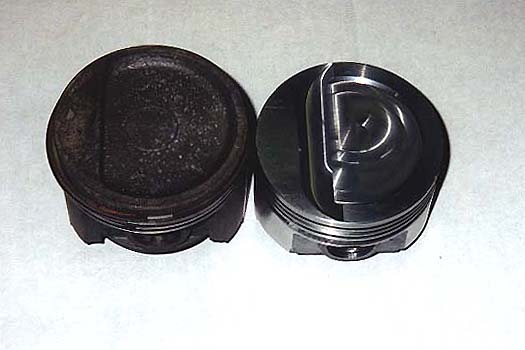Piston selection was based on a few key points, the first being piston to wall clearance. Pistons should be run at the tightest clearance possible to minimize piston rocking, ring rocking, blowby, and noise. Cast pistons have a relatively low coefficient of thermal expansion and are therefore run at “tight” clearances, while forged pistons expand more thermally and require greater cold clearance. The newest pistons on the general market, hypereutectic alloy pistons, are run at clearances similar to those used for cast pistons.
Piston strength is another factor that selection was based on. It has long been understood that forged pistons are stronger than cast, but what is not as clear is how strong the hypereutectic alloy pistons are. Pistons operate at a relatively high temperature, and most engineering materials lose strength at elevated temperatures. The point at which a material deforms permanently under load is called the “yield” point of the material. Any loading below the yield point may deform the material, but it will return to its original shape (called the elastic range). If a piston were loaded continually in the same manner, the only material property of importance would be the yield strength at the operating temperature of the piston. For parts that are loaded cyclically like pistons, the “fatigue strength” of the part at the operating temperature must also be considered, which gives an indication of how many times you can apply a given load to a part before it will begin to fail. These properties were evaluated for hypereutectic pistons by Sealed Power and published in the December 1995 issue of Car Craft along with comparable data for forged pistons. Yield strength and fatigue strength of hypereutectic alloy material was shown to be substantially higher than that of a forged piston at all temperatures. Therefore for comparable piston designs operating at comparable temperatures, the hypereutectic piston is the strongest. Here are the tables used in the article:
 |
|
|
|
Note shorter compression height and high top ring placement. |
Miscellaneous considerations include availability, ring
groove placement, machining quality, and technicall support by the manufacturer.
The Keith Black / Silvolite hypereutectic pistons used were easily available
(305 Chevy), utilized high ring grooves, exhibited no machining defects,
and the manufacturer’s Chief Engineer and technical staff were the finest
I’ve ever dealt with.